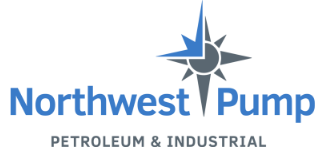Diesel engines have been the backbone of the marine industry since the early 1900s. Larger vessels utilize diesel-driven engines due to their simplicity, reliability, and energy efficiency. However, the challenge with this style of engine is often configuring the correct startup sequence to power the engine consistently and safely. This guide will delve into the difference between diesel air and electric start systems, the requirements for the system to operate, and other key applications for compressed air on marine vessels.
What is a start system?
Diesel engine start systems use air or electricity to kickstart the large turbines within the engine into gear. An air start system uses compressed air to directly or directly turn the diesel engine turbines through an air motor. Electric start systems utilize an additional motor that pulls energy from the boat’s batteries.
Electric vs. Air Start Systems

example of an air start system from machineryspaces.com
Air start systems for diesel-driven motors are generally recommended in marine applications, especially for larger vessels. Electric start systems require additional motors and batteries, which take up more floor space and add more weight onboard. The extra motor will siphon energy off from the ship’s main battery. The functionality of this added equipment will vary depending on the ambient temperatures. Having these complex electrical components out at sea puts them at risk of corrosion. Even if it doesn’t touch seawater, the air is humid and salty enough to cause corrosion.
A diesel air start system requires less equipment with less complex electrical components. This lowers the risk of corrosion and ignition sources in and around flammable materials. Air start systems also allow for more safety measures through interlocks. These interlocks are valves set up to block the initial burst of air from reaching the turbines prematurely. The result is additional protection against engine startup accidents and ensuring the correct air pressure is available to turn the turbines. While the properties of compressed air change with temperature, the fluctuations will not be significant enough to prevent the engine from turning on.
Diesel Air Start System Requirements
Building a diesel air start system starts with selecting the suitable compressor and tank combination. It is recommended to size the air tank- or “bottle”- to store enough compressed air for twelve startups when complete. An engine’s operating manual will specify the amount and pressure of air needed to start the specific engine model. This compressor system will also require air treatment to remove dust, water vapor, and flammable oil condensate from the air before it reaches the engine.
Regular air maintenance of this compressor system is as essential as selecting the initial unit and tank. Air tanks must be condensate-free to deliver as much air as possible to the engine. Valves and piping will also need regular inspection to prevent air leaks.
Other Common Compressed Air Uses on Ships
At least one air compressor system is usually already present on a vessel to assist with other necessary processes, including:
- Control systems: Compressed air is used for throttle controls, control valves, and engine emission monitoring systems.
- Water supply: Compressed air pressurizes hydrophores to distribute water for domestic and sanitary use.
- Wastewater treatment: Compressed air powers onboard sewage systems to conduct aerobic sewage breakdown.
- Safety features: Compressed air powers safety features like ship whistles, foghorns, and fire pumps.
- Pneumatic pumps: Compressed air powers pneumatic pumps to transfer water, oil, and bilge.
- Lifeboats: Air motors help heave up lifeboats for crewmen and staff.
Champion Air Compressors

The pressure-lubricated PL-series from Champion exceeds in demanding applications where typical compressors will falter. What sets this series apart is the heavy-duty, rugged design. Both the crankshaft and connecting rod are protected by pressure lubrication to ensure that the compressor oil is used when and where it is precisely needed. The PL-series also offers load-less starting, which provides easy, fast startup. Both of these features work together to extend the life of the compressor.
The PL-series comes in simplex and duplex styles and offers options between 3HP and 30HP. The difference between simplex and duplex builds is the number of pumps in the assembly. A simplex unit will have a pump, motor, and tank assembled in a single package. Duplex units have two pumps and two engines, all mounted together onto a tank. Having two pumps allows for a more consistent air supply. As one pump finishes its cycle, the second will start without reducing air output. Champion also sells the pumps individually for replacements or custom builds. PL-series compressors come with Champion’s standard 3-year warranty; alternatively, Champion also offers a 6-year warranty option with the parts and consumables needed to maintain the machine for an additional 3 years.
Next Steps
Northwest Pump offers air compressors and compressor parts from top vendors like Champion. Below, contact our team to find the right compressor for your diesel air start application. Use the request service button to schedule your compressor service appointment.




